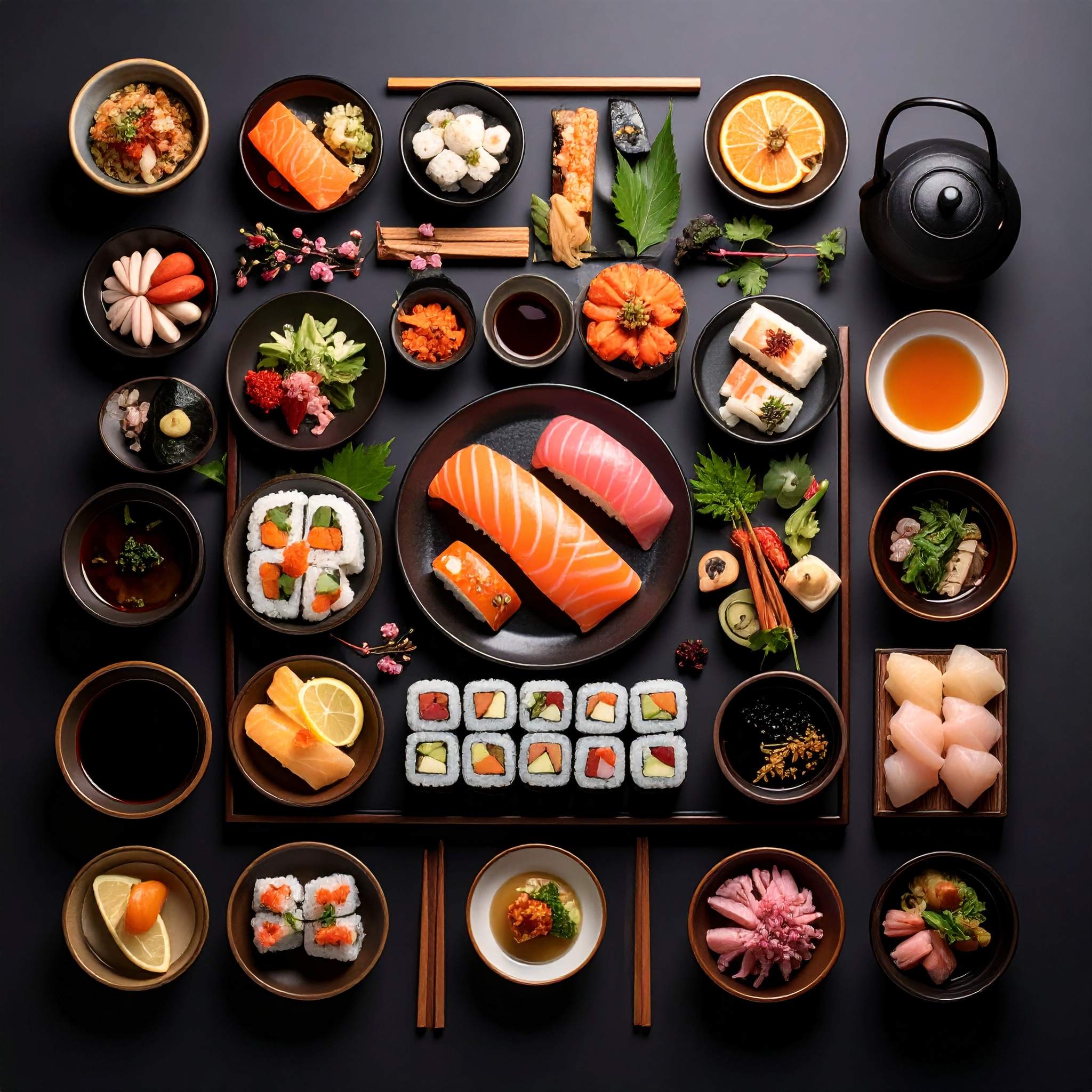The Japanese concept of “omotenashi” has become globally recognized—not as mere courteous service or polite gestures, but as an intuitive, heartfelt attentiveness that anticipates guests’ needs without words. This inner grace is most exquisitely expressed in the world of kaiseki, the refined, multi-course dining tradition.
Originally, kaiseki evolved from the simple “one soup, three dishes” served in tea ceremonies—a humble repast meant to gently satisfy guests before the tea itself. Its name, derived from the idea of “holding a stone close to the heart”, conveys a spirit of modesty enriched with sincere warmth. Even as kaiseki has grown into the pinnacle of haute Japanese cuisine, its essence remains unwavering: a profound care for the guest.
Kaiseki has evolved over time—branching from tea ceremony schools, weaving in regional customs, and reflecting the changing seasons. Today, it stands as the epitome of fine Japanese cuisine. Yet, even at its most formal, at its heart remains a single, unwavering principle: a deep mindfulness toward the guest.
A traditional kaiseki sequence — sakizuke (amuse‑bouche), wanmono (soup), mukōzuke (sashimi), yakimono (grilled dish), nimono (simmered dish), shiizakana (heavier dish), sunomono (vinegared dish), gohan (rice), tome-wan (finishing soup), mizugashi (dessert) — is familiar, yet never fixed. Each progression is artfully adapted to the season, the occasion, or the sensibility of those dining. It’s this inherent flexibility that lifts kaiseki beyond mere cuisine and transforms it into a living performance of time and space.

The spirit of hospitality begins the moment the guest takes their seat.
From the precise placement of the seating, the scroll hanging in the alcove, seasonal floral arrangements, and carefully chosen tableware, to the ambient temperature and fragrance of the space—every detail is orchestrated to appeal to the five senses, gently calming the soul. When the first course arrives, the guest is not only delighted by its flavor but captivated by the seasonal colors, aromas, and delicate presentation, which immediately conveys a sense of time and place. More than the food itself, it is the pacing and flow of the meal that naturally communicates the host’s mindfulness and care.
Temperature and timing—hallmarks of refined hospitality.
In a traditional kaiseki experience, precise temperature control is a subtle yet critical form of hospitality. A warm soup is kept at just the right temperature until the moment it is served, so the steam gently rises as the guest lifts the bowl. Grilled dishes arrive freshly seared, their aromas intact, never allowed to cool. Such harmony of timing and temperature requires the chef’s refined skill and a deep sensitivity to the guest’s experience.
A curated harmony between food and vessel.
While the cuisine is the focal point, the choice of tableware plays a vital supporting role. Every dish is selected to complement the season, the light, and the atmosphere of the room. In spring, pale ceramics evoke the gentle hues of blossoms; in summer, translucent glass brings cool relief; in autumn, earthy glazes suggest warmth; and in winter, deep-toned porcelain exudes calm sophistication. The plate becomes the stage on which each dish performs.
The reverence for seasonality is a profound gesture of respect.
In kaiseki, seasonality is not merely a matter of freshness but a deeply rooted message: “I want you to experience something that can only be enjoyed now.” From the first bamboo shoots of spring, to the rich flavor of autumn saury, to the creamy textures of winter’s milt, each ingredient is offered at its peak. This devotion to timing reflects a sincere expression of regard for the guest.
Elegance lies in restraint and thoughtful surprises.
A refined sense of playfulness and space is embedded in the kaiseki menu. Unexpected pairings, such as an unfamiliar ingredient used in a new way, a hidden flower petal in a bowl, or the subtle harmony of mountain and sea ingredients—all invite a quiet sense of discovery. Never ostentatious, these gestures create moments of wonder, allowing the guest’s senses and imagination to engage. This is the essence of sophisticated hospitality: quiet, considered, and deeply human.

In kaiseki cuisine, the focus lies not in volume or extravagance, but in the movement of the heart.
Through the act of savoring each dish, one is invited to sense the changing of the seasons, to rest within a moment of stillness, and to receive the quiet intentions of the host. Over the course of the meal, a silent harmony—an invisible “wa”—is gently cultivated between the giver and the receiver.
In recent years, hospitality has gained recognition as a key metric in global restaurant evaluations and luxury tourism. Yet, kaiseki has long embodied this ethos, refined over centuries through the deep contemplation of what to offer, how to present it, and when to serve. This tradition is not governed by manuals, but by wisdom shaped through intuition and years of experience.
Guests, too, play a role in completing the hospitality. They are expected to receive with quiet appreciation, to observe attentively, to taste with all five senses, and to dwell in the lingering aftertaste. It is this mindset that brings the host’s efforts to full fruition. The mutual respect established through the medium of cuisine is what makes Japanese culinary culture so unique and profound.
Kaiseki is more than a dining experience—it is a space where hearts are exchanged. Within each course, one finds unspoken consideration, unseen attentiveness, and the quiet imagination that brings the meal to life. True hospitality is not about doing something for someone—it is about being attuned to their presence and gently offering what is needed, when it is needed, without expectation. This philosophy is embedded deeply and beautifully in every element of kaiseki.




